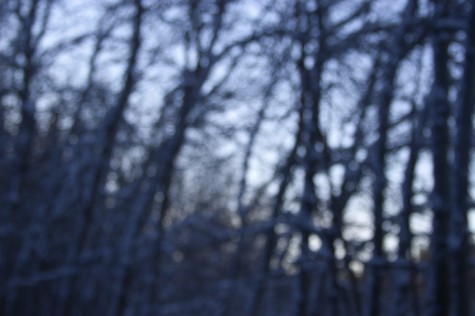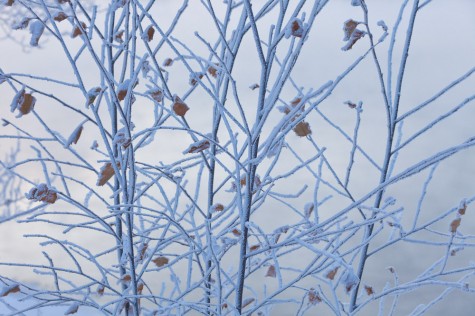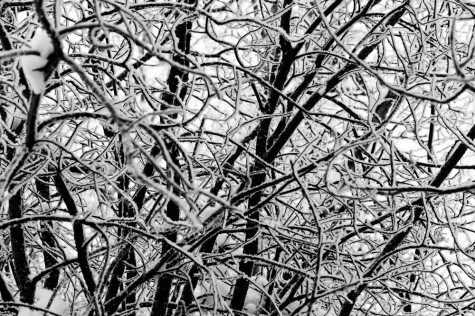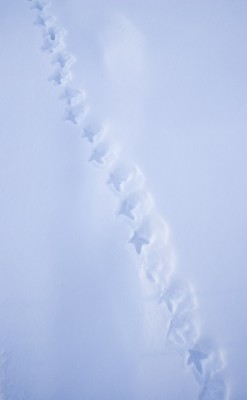 Curves in dried fireweed I know it’s odd to call this post “Dried fireweed detail” when 95% of the photograph is out of focus. For me however, this image captures the essence of the detail—and the depth—of the dried seed pods. The title’s also a bit if a play on words—using “detail” in the sense of a close-up of a portion of a larger work, like when a small section of a painting is enlarged in a book to show a painter’s technique, for example. I really enjoy getting in close to a photographic subject to look for an angle that can capture the greater “whole” of the subject while showing only a small portion.
Several of my favourite Alberta landscape photographers have been posting small galleries of their past year’s best landscape photographs, so I decided to do the same. It was fun to look back through a year’s worth of photos, and impossible to decide which were my “favourite”. I decided to pick one favourite photo from each of the locations in Alberta that I regularly make photographs including: Jasper National Park, Waterton National Park, and the Icefields Parkway in the Rocky Mountains; and Ministik Lake Game Bird Sanctuary, Whitemud Ravine, Gold Bar Park, and the Strathcona Science Park closer to my home in Edmonton.
I’ve posted all of the photos below as a group (in chronological order) but I will also create a separate entry for each photo to provide extra details about the image like I usually do—just click on the link below each photo to go to it’s detail page. (It will take me a little while to get them all up)
I hope you enjoy this small collection, and I do always appreciate it if you leave a comment with your thoughts or reaction. Happy New Year, and I wish you many fine photographs in 2010!
 Mountain Geraldine ridge Along the Icefields Parkway [ Click for more details]
 Pale winter sky through poplar canopy Ministik Lake (in the winter)
 Chickweed blooms and fern Waterton National Park
 Brooding cloud over Ministik Lake Ministik Lake (in the summer) (I know that’s cheating a little)
 Athabasca River island at dusk Jasper National Park
 Birch stems and early autumn colour Goldbar Park (North Saskatchewan River Valley)
 Late autumn willow thicket Whitemud Ravine [ Click for more details]
 Ice fog frozen on alder saplings Strathcona Science Park [ Click for more details]
 Tangle of winter branches II Here’s another detail-oriented image taken during our recent spell of grey, overcast winter days. As I mentioned in a previous post, when the light is diffused so evenly by the low, bright stratus clouds that are common over central Alberta in the winter (especially the past few weeks), it’s often these close-up, detail oriented compositions that I find work best.
I don’t commonly convert images to black and white, and even less often do I process them quite as heavily as I have here. While the contrast was fairly strong to begin with, I’ve “crushed” the darks all the way down, and bumped the background sky all the way up, to really emphasize the somewhat abstract pattern of the tangled branches, accentuated by the lining of snow and frost. Perhaps I’ll also post the original version as well, and I would love to hear your comments as to which you prefer.
 Ministik shoreline in white To continue the line of thought from my last entry, another type of composition that I find can work on grey, overcast winter days when the light is perfectly flat and even is a “high-key” image like this one. If there’s fresh snow, the whole landscape can turn the same colour–light grey. I find the trick is to ensure that my exposure is bumped up a little bit to turn the greys to white, and to find a little bit of contrast (spruce are great for this) for visual interest. These very subtle, almost monotone, images really capture the feeling of these most-subtle of winter days.
 Branches and catkins against a flat winter sky In central Alberta the cold snap is over, and a prolonged case of the “winter-stratus” has set in—stratus clouds, that is. These are low, featureless clouds and in winter, when there isn’t much moisture, they are generally light grey to nearly white. Sometimes, like yesterday afternoon, they’ll lift a little to where you might call them altostratus, and you’re more likely to catch a little break for the sun to peak through. These are probably the most common clouds (stratus and altostratus) over Edmonton during the winter when there’s not enough solar energy to build a decent cumulus cloud. (I think I may be letting the cloud-watcher nerd in me show a little here).
Photographically speaking, stratus clouds make the light perfectly flat and even, which can be both a curse and a blessing. Generally, the contrast of side light and shadows makes for more dramatic images than the flat light under a stratus ceiling, but I find that sometimes detail-oriented compositions benefit from the “huge softbox in the sky” effect. I enjoy the challenge of finding these photographs on days that would normally be considered photographic busts.
 Grouse tracks in fresh snow I was sent a photo recently of an unidentified bird out at Elk Island National Park that turned out to be a Ruffed Grouse. The same day I had been out taking photographs at Ministik Lake Game Bird Sanctuary, which is just south of Elk Island, and had come across a fair number of grouse tracks in the dusting of fresh snow that had fallen overnight (this photo was taken at Ministik, but a couple years ago). The tracks are quite distinctive with the wide snowshoe-like toes, and it’s interesting to see where the birds come and go. Keep an eye out for these next time you’re in the fresh snow.
|
(Click photos to enlarge)
|




























